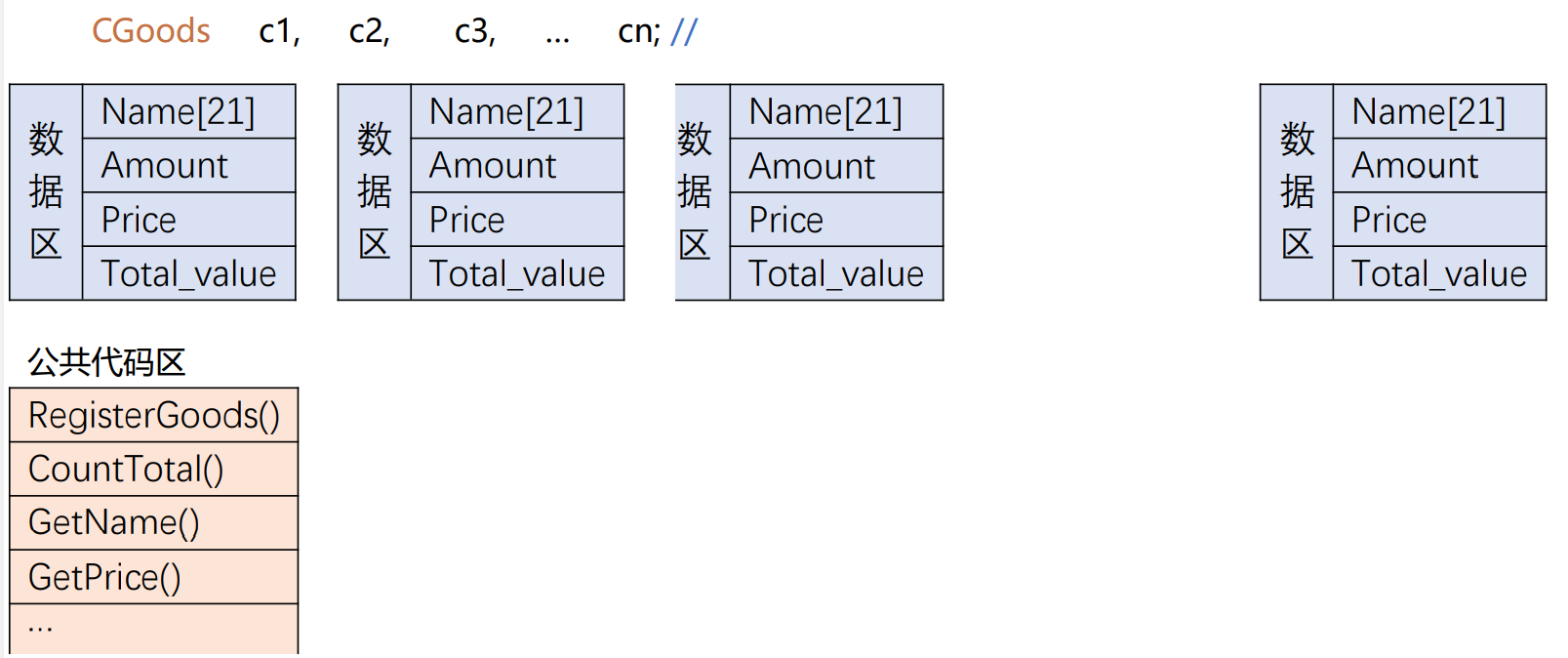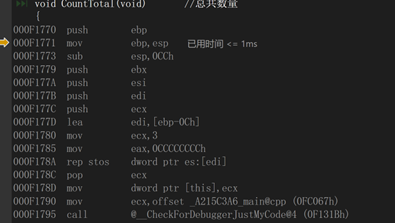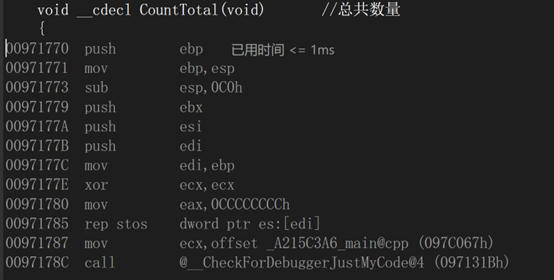C++学习笔记 (2)
| 阿里云国内75折 回扣 微信号:monov8 |
| 阿里云国际,腾讯云国际,低至75折。AWS 93折 免费开户实名账号 代冲值 优惠多多 微信号:monov8 飞机:@monov6 |
C++问题的补充
前言
关于对之前遗留的补充
- malloc 和 new 的区别
- const 和 引用 的深入
- this指针 的深入
一、C++中对象的创建
malloc和new创建对象
//定义一个Pointer类
class Pointer
{
public:
int row;
int col;
Pointer()
{
row = 0;
col = 0;
}
Pointer(int r, int c)
{
row = r;
col = c;
}
~Pointer()
{
cout << "Pointer" << endl;
}
};
malloc不能创建对象,需要配合定位new使用
//什么是 定位new
定位new表达式是在已分配的原始内存空间中调用构造函数初始化一个对象。
换句话说就是,现在空间已经有了,不需要定位new像常规new一样去给申请
空间,只需要定位new在已有的空间上调用构造函数构造对象而已。
简而言之,已存在空间,再构造对象。
malloc作用:
- 1、堆区申请空间
- 2、堆区无对象
//定位new,在已有(malloc申请的)空间上,构造对象
int main()
{
Pointer* s = (Pointer*)malloc(sizeof(Pointer));
new(s) Pointer(12, 23);
s->~Pointer();
free(s);
s = NULL;
return 0;
}
new创建对象的的过程:
- 1、调用malloc,从堆区申请空间
- 2、构建对象,调用构造函数
- 3、对象地址空间返回给p
//普通new,先申请空间,再创建对象
int main()
{
Pointer p1(100,200);
Pointer p;
p = new Pointer(10,20);
delete p;
return 0;
}
二、new 和 malloc 的区别
| 区别 | new | malloc |
|---|---|---|
| 属性 | 关键字 | 库函数 |
| 参数 | 无需指定内存块大小,编译器实现 | 需要指定大小 |
| 返回类型 | 对象类型的指针 | void * |
| 重载 | 支持 | 不支持 |
| 内存 | 在free store上分配内存 | 在堆区空间分配内存 |
| 分配失败 | bac_alloc异常 | 返回NULL |
| 自定义类型 | 可以调用析构与构造 | 不可调用析构和构造 |
| 效率 | 高 | 低 |
三、C与C++的一个重要区别
C语言:有空间一定能操作
C++: 有空间不一定有对象,有对象一定要有空间
C
int main()
{
char str[10];
int* ip = (int*)str;
*ip = 100;
}
C++:有对象一定要有空间
//有对象一定有空间,即使是空类
class Test
{
};
int main()
{
Test t;
cout << sizeof(t) << endl; //空类大小为1
return 0;
}
空类的大小:
声明类型时也需要占用一些空间
如果没有这个空间,也就不知道该类型的存在。
空类具体占用的空间大小由编译器决定,vs2022中大小为1
编译器自动为其安插1个char。
//有空间可能没对象
int main()
{
CGoods* p = (CGoods*)malloc(sizeof(CGoods));
cout << p->GetPrice() << endl; //结果:-4.31602e+08
}
四、this指针
1. 什么是this指针
例子代码如下:
//一个商品类型
class CGoods
{
private:
char Name[21];
int Amount;
float Price;
float Total_value;
public:
void RegisterGoods(const char[], int, float); //注册商品
void CountTotal(); //总共数量
void GetName(const char[]); //获得名字
int GetAmount(void); //读取商品
float GetPrice(void); //得到价格
float GetTotal_value(void); //总价
};
void CGoods::RegisterGoods(const char name[], int amount, float price)
{
strcpy_s(Name, 21, name);
//strcpy_s(this->Name, 21, name);
Amount = amount;
//this->Amount = amount;
Price = price;
//this->Price = price;
}
void CGoods::GetName(const char name[])
{
strcpy_s(Name, 21, name);
}
int CGoods::GetAmount(void)
{
return Amount;
}
float CGoods::GetPrice(void)
{
return (Price);
}
int main()
{
CGoods c1, c2, c3;
c1.RegisterGoods("C++", 12, 98.99);
c2.RegisterGoods("C++", 23, 15.9);
c3.RegisterGoods("C++", 44, 54.3);
return 0;
}
这里并没有this的存在,那么this指针在哪呢?
首先来看一下C++模型对象的安排
方法一:各对象完全独立的安排内存

上图是系统为c1,c2,c3对象分配了全套的内存,包括安放成员数据的数据区和安放成员函数的代码区。但是区别同一个类所实例化的对象,是由属性(数据成员)的值决定,不同对象的数据成员的内容是不一样的,而行为(操作)是用函数来描述的,这些操作的代码对所有的对象都是一样的。
方法二:数据区私有,代码区公有

在C++中,通过公共代码区节省了大量的空间。
那么对象是如何区分哪个是自己的数据区呢?
this指针就是解决这个问题的。
2. this指针的底层
首先明确几个概念:
- this指针不属于对象的一部分,不会影响sizeof(对象)的结果。
- 只有在类的非静态成员函数中才可以使用this指针,其它任何函数都不可以。
- this的作用域在类成员函数的内部。
当在类的非静态成员函数中访问类的非静态成员的时候,编译器会自动将对象本身的地址作为一个隐含参数传递给函数。也就是说,即使你没有写上this指针,编译器在编译的时候也是加上this的,它作为非静态成员函数的隐含形参,对各成员的访问均通过this进行。
仍然是上一个例子:
//注释为本质
//成员方法的第一个参数添加一个对象类型的this指针。
//成员方法中出现的所有成员属性由this指针指向。
void CGoods::RegisterGoods(const char name[], int amount, float price)
//void CGoods::RegisterGoods(CGoods *this,const, const char name[], int amount, float price)
{
strcpy_s(Name, 21, name);
//strcpy_s(this->Name, 21, name);
Amount = amount;
//this->Amount = amount;
Price = price;
//this->Price = price;
}
int main()
{
c1.RegisterGoods("C++", 12, 98.99);
//对象 + . 调用成员方法的本质
//逻辑上面向对象,实际上是面向过程
//RegisterGoods(&c1, "C++", 12, 98.99);
}
这样就不难理解,当通过 对象 + . 调用成员方法时,会将对象的地址作为第一个参数传递给成员方法,这也是一个对象数据区的唯一标识。得到该地址以后,调用成员函数中如果遇到成员属性,就给每个属性前面加上this。
3.this指针 的类型
this指针的类型为 : 类型名 * const this。
但是在VS2022中发现并没有这个const,不知道是什么情况
4. C++类成员函数默认调用方式 与 c语言调用方式的区别
C++默认调用(C++成员函数的this指针)
void CGoods::RegisterGoods(const char name[], int amount, float price)
{
strcpy_s(Name, 21, name);
//strcpy_s(this->Name, 21, name);
Amount = amount;
//this->Amount = amount;
Price = price;
//this->Price = price;
}
void CGoods::GetName(const char name[])
{
strcpy_s(Name, 21, name);
}
int CGoods::GetAmount(void)
{
return Amount;
}
float CGoods::GetPrice(void)
{
return (Price);
}
int main()
{
CGoods c1, c2, c3;
c1.RegisterGoods("C++", 12, 98.99);
//C++的调用约定 lea ecx , [c1]
c1.CountTotal();
return 0;
}
对象 . 调用成员方法,逻辑上是面向对象,物理上还是面向过程,会将对象地址传递给成员函数的this指针。对象的地址传递时候,直接进行 lea ecx, [c1]。到达成员函数内部时,使用mov指令,将ecx的值传递给this指针。


c语言调用方式(thiscall调用)
在成员函数前面加上__cdecl ,说明是C的调用约定,我们可以将c1的地址传递给eax,通过push指令入栈eax,直接传递给形参。
//通过使用__cdecl改写 thiscall
//void __cdecl CGoods::RegisterGoods(const char name[], int amount, float price);


5、this 与 常对象
常对象只能调用常方法,普通对象能调用普通方法和常方法。
例子:
//main函数中,哪些语句能编译通过
class CGoods //设计类型,不是定义类型
{
private:
char Name[21];
int Amount;
float Price;
float Total_value;
public:
CGoods(char name[], int amount, float price, float total_value)
{
strcpy_s(Name, name);
Amount = amount;
Price = price;
Total_value = total_value;
}
void RegisterGoods(const char[], int, float);
float GetPrice(void)
{
return Price;
}
float GetTotal_value(void) const
{
return Total_value;
}
};
int main()
{
CGoods c1 = { "C++",12,23.0,23.0 };
const CGoods c2 = { "java",12,23 };
c1.GetPrice(); //right:普通对象调用普通方法可以通过this指针修改成员函数的值
c2.GetPrice(); //error:常对象不能调用普通方法。常对象调用普通方法时,成员属性有修改的风险,所以报错。
c1.GetTotal_value(); //right:普通对象既可以调用普通方法又可以调用常方法
c2.GetTotal_value(); //right:常对象只能调用常方法
}
我们知道了this指针的类型是 对象名 *const this。那么对象加 const 也就是const 对象名 *const this类型,为了给this指针所指向的对象限定,也就是不允许修改对象中的成员属性,那么任何对成员属性进行修改的行为都是错误的。
四、const 回顾
int main()
{
const int a = 10;
int b = 20;
int* p1 = &a; //error:可以通过p1改变a
const int* p2 = &a; //right:p2所指向的值不能修改
int* const p3 = &a; //error:可以通过p3改变a,但不能改变p3的指向
const int* const p4 = &a; //right:能力收缩
return 0;
}
五、构造函数和析构函数
1.构造函数和析构函数的用法
class Pointer
{
public:
int row;
int col;
//构造函数:
//1、函数名与类名相同
//2、无返回值
//3、对象实例化时,编译器自动调用
//4、可以重载
Pointer() //无参构造函数,缺省构造
{
row = 0;
col = 0;
}
Pointer(int r, int c) //构造函数重载
{
row = r;
col = c;
}
~Pointer() //析构函数
{
cout << "Pointer" << endl;
}
//析构函数:
//1、~ + 类名
//2、析构函数无函数返回值类型
//3、一个类只能一个也只能有一个析构函数
//4、对象注销时,系统会自动调用
//5、如果没有给出析构函数,系统会给出默认析构函数
};
int main()
{
Pointer c1 = { 12,23 };
Pointer c2; //right:调用缺省构造函数
//Pointer c2(); //error:没有参数不需要带括号
Pointer c3(10, 20); //right:调用带参数构造函数
//不能通过对象手动调用构造函数
//c2.Pointer(10,20); //error
//有空间不一定有对象,得要对象调用构造函数来构建对象,才有空间
//有对象一定有空间
return 0;
}
2.构造函数和构造函数的执行顺序
留给后面
class Object
{
private:
int val;
public:
Object(int x)
{
val = x;
cout << "create :" << val << endl;
}
};
Object o1(1);
int main()
{
Object o2(2);
}
Object o3(3);
已解决:程序执行顺序
总结
待解决的问题:
| 阿里云国内75折 回扣 微信号:monov8 |
| 阿里云国际,腾讯云国际,低至75折。AWS 93折 免费开户实名账号 代冲值 优惠多多 微信号:monov8 飞机:@monov6 |

